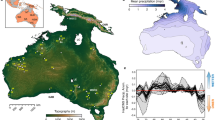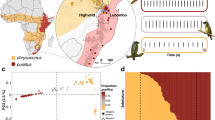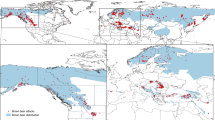Abstract
MOST individuals of the two spot ladybird, Adalia bipunctata, may be designated as red with black spots, or as black with red spots. Although intermediate forms are found, they usually constitute less than 1% of the population in Britain. The most commonly occurring black forms are under the control of a single gene and are genetically dominant over the red forms1. In parts of continental Europe2 and in Britain3,4, the frequency of black is highest in industrial and other areas with much atmospheric pollution; up to 97% melanics are found in Liverpool and Glasgow. Multiple regression analysis suggests that there is an association of high melanic frequency with smoke, but not with sulphur dioxide5, this conclusion is supported by results from Birmingham, where melanic frequencies fell soon after the introduction of extensive smoke control areas, which had only a relatively small effect on sulphur dioxide levels6.
This is a preview of subscription content, access via your institution
Access options
Subscribe to this journal
Receive 51 print issues and online access
$199.00 per year
only $3.90 per issue
Buy this article
- Purchase on Springer Link
- Instant access to full article PDF
Prices may be subject to local taxes which are calculated during checkout
Similar content being viewed by others
References
Lus, J. J., Izv. Byuro Genet., 6, 89–163 (1928).
Lusis, J. J., Latv. Ent., 4, 3–29 (1961).
Creed, E. R., Heredity, 21, 57–72 (1966).
Creed, E. R., in Ecological Genetics and Evolution (edit. by Creed, E. R.) 134–151 (Blackwell, Oxford and Edinburgh, 1971).
Lees, D. R., Creed, E. R., and Duckett, J. G., Heredity, 30, 227–232 (1973).
Creed, E. R., Evolution, Lancaster, Pa., 25, 290–293 (1971).
Warren Spring Laboratory, National Survey of Air Pollution 1961–71, 2 (HMSO, London, 1972).
Williams, R. J. H., Lloyd, M. M., and Ricks, G. R., Environ. Pollut., 2, 57–68 (1971).
Creed, E. R., Lees, D. R., and Duckett, J. G., Nature, 244, 278–280 (1973).
Author information
Authors and Affiliations
Rights and permissions
About this article
Cite this article
CREED, E. Two spot ladybirds as indicators of intense local air pollution. Nature 249, 390–392 (1974). https://doi.org/10.1038/249390a0
Received:
Issue Date:
DOI: https://doi.org/10.1038/249390a0
This article is cited by
-
A study of nonrandom mating in a British population of the two-spot ladybird with a high frequency of the melanic morph
Journal of Insect Behavior (1996)
-
Nonrandom mating in the two-spot ladybird (Adalia bipunctata): The influence of weight on mating success
Behavior Genetics (1995)
-
Seasonal variation in elytral colour polymorphism in Harmonia axyridis (the ladybird beetle): the role of non-random mating
Heredity (1992)
-
The basis of thermal melanism in the ladybird Adalia bipunctata: Differences in reflectance and thermal properties between the morphs
Heredity (1985)
Comments
By submitting a comment you agree to abide by our Terms and Community Guidelines. If you find something abusive or that does not comply with our terms or guidelines please flag it as inappropriate.



